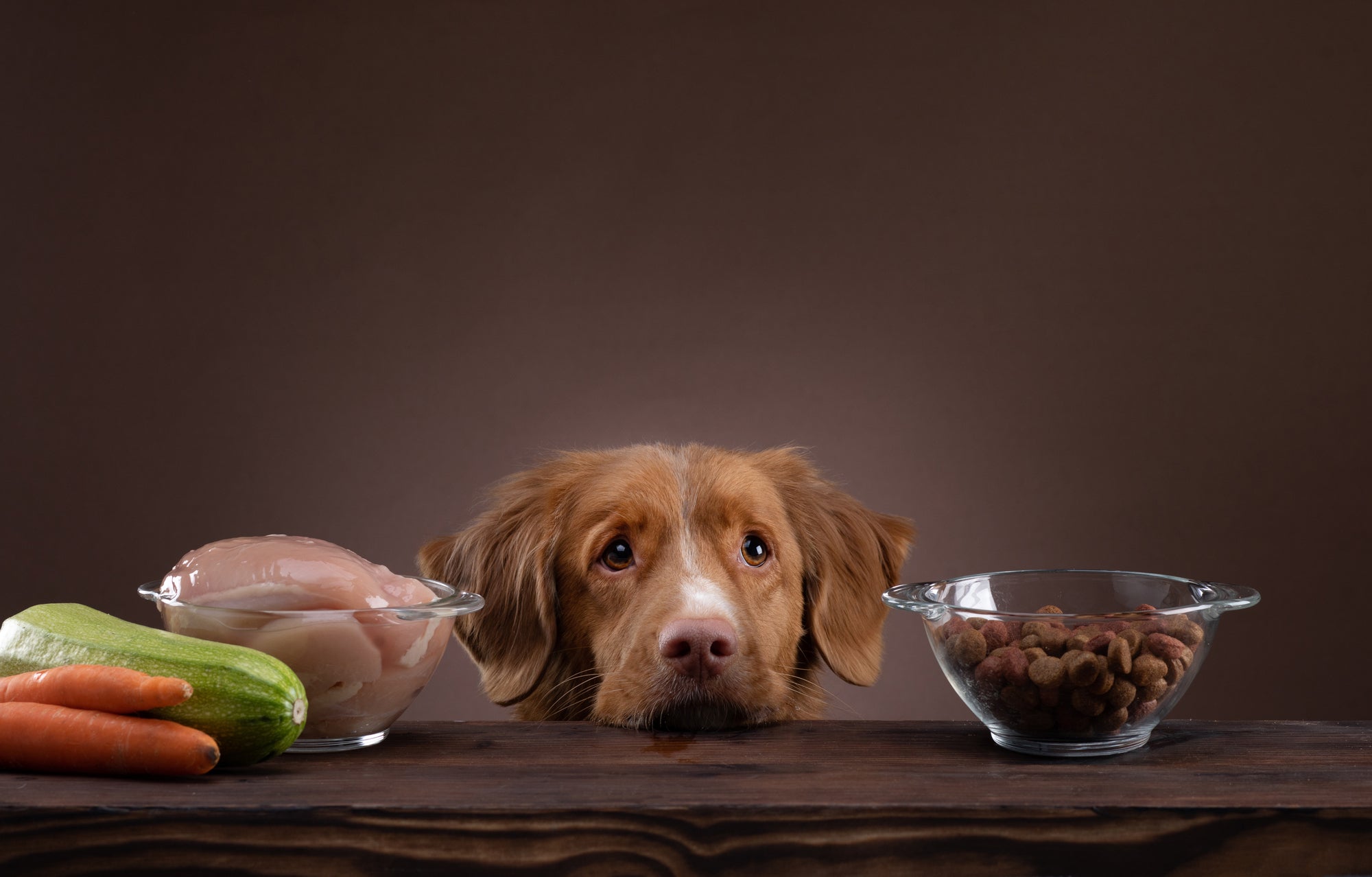We all want the best for our loyal companions and their diet is an important part of that. What we feed our dogs helps reassure us we are giving them everything they deserve and that we have their best interests at heart.
In fact, of all the decisions we have to make for our pets, what to feed them is probably the most important one.
That’s the subject of today’s post.
In particular, whether raw dog food or a raw diet is the way to go and whether it gives your pooch everything they need to thrive.
Raw dog food
Let’s start at the beginning. What is raw dog food and what makes up a raw food diet for your dog?
Raw dog food is typically made up of:
- Raw meat either minced, chopped or on the bone
- Animal bones
- Offal and organ meats like liver or kidneys
- Raw fish or eggs
- Raw vegetables like spinach or celery
- Fruit
The idea behind a raw dog food diet is to minimise processed dog food as much as possible and mimic their natural diet.
Dogs in the wild are scavengers and will eat whatever they find. They do hunt too, so tend to eat smaller animals.
A raw dog food diet tries to reflect this as much as possible.
The thinking is that a raw diet like they would have in the wild would be easier for your dog to digest and give them everything they need to survive.
A raw diet is about more than just putting meat on the plate though. Dogs need balance just like us humans.
An effective diet will include meat, vegetables, fish, eggs and perhaps some dairy if your dog can digest it.
Making sure your pet has access to fresh water is also essential for any diet, especially a raw food diet. Animals prefer running water to standing water, as taps into their natural instincts.
So, using a pet fountain from Closer Pets, will help to encourage your pet to drink more and stay hydrated.
Rather than tell you or recommend what to feed your pooch, we’re going to highlight the advantages and disadvantages of a raw dog food diet.
The advantages of raw dog food
There are several distinct advantages of a raw dog food diet.
Less processed food
Even high quality dog food is heavily processed. You also have no idea of the quality of any meat within the food or the filler ingredients used within it.
You control a raw food diet so you know everything that goes into it.
Closer to a natural diet
Dogs would eat raw food in the wild and evolved to thrive on what they found. This is reflected in the raw food we provide them.
It’s as close as possible to a natural diet and should provide everything they need in a form they are instinctively familiar with.
Improvements in coat
Those who feed their canine companion a raw food diet tend to notice a shinier, healthier looking coat.
While this is anecdotal, we all know our dogs well enough to notice whether their coat looks better or not, so we take this as an advantage.
The disadvantages of raw dog food
There are also some downsides to a raw food diet for dogs however:
Price
Tinned dog food tends to be cheap and plentiful. A raw food diet made up of real ingredients is going to be more expensive.
However, this is one of those times when you really do get what you pay for. The more goodness you put in, the more goodness you get out.
Convenience
It’s easy to open a tin of dog food, pour it into a bowl and add some kibble at mealtimes. It’s slightly more difficult to prepare raw food from ingredients.
It will take creative storage and extra time and effort to prepare raw meals for your dog, so it’s a definite investment.
Food handling
Not everyone is going to enjoy handling raw meat or offal and preparing it for your dog to eat. Some people aren’t going to enjoy having it in their fridge either, however much their dog might thank them for it!
Then there are fears over contamination and food safety. Not an issue as long as you take precautions, but still a concern.
Not all vets approve
Believe it or not, vets don’t universally approve of raw food diets for dogs. There are concerns of the quality of the product and balance within the diet.
As long as you provide a healthy mix of meat, offal, fish, eggs, vegetables and dairy, your vet should have no problem with it.
How to introduce your dog to a raw food diet
If you choose to go down the raw food route, we suggest introducing it slowly so they transition from their current diet to their new one over time.
Source good quality meat and offal from your butcher and research a healthy diet for the breed, size and type of dog you have.
Come up with a viable, sustainable mix of meat and those other elements we mentioned that give as much balance as possible.
Be careful to keep bones suitable for your size of dog, keep offal for occasional feeding and only include dairy if you know your dog is okay with it.
Experiment with amounts and include a kibble to help provide anything the raw food diet is missing.
So, is raw food a good idea for your dog?
As you can see, a raw food diet can be a good idea for your dog. It mainly comes down to creating a balanced diet with everything your dog needs and securing a viable source of ingredients.
It does require more work and safe food handling, but if you want to try a raw food diet, there is no real reason not to. None that we know of anyway.
